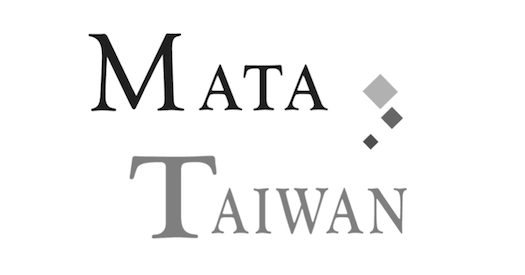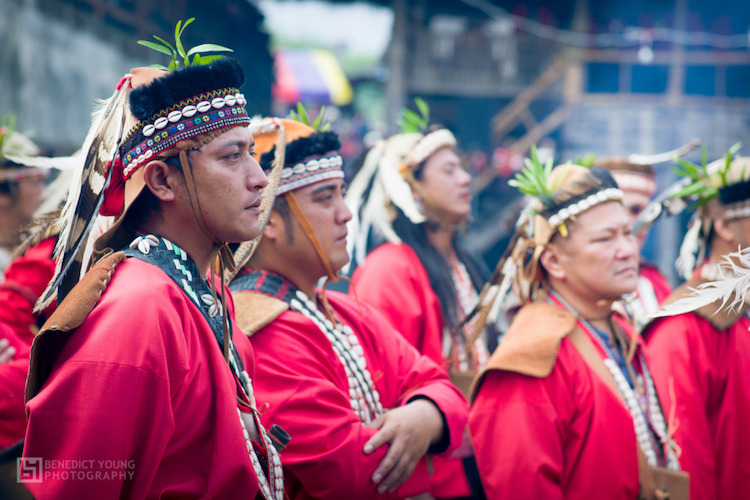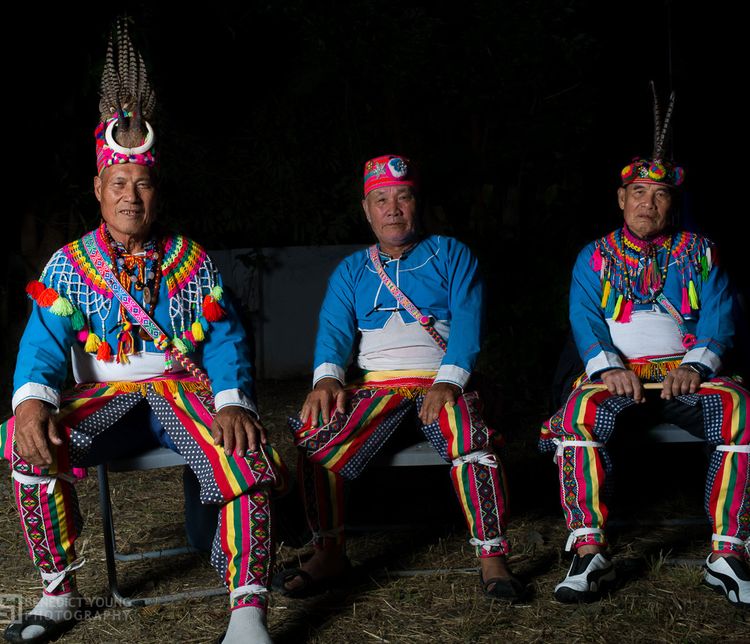The ‘Mayasvi’ or Ceremony of War and Triumph is the greatest event in the calendar of Taiwan’s Tsou people. Now only carried out in either Tefuye (Tfuya) or Dabang (Tapangʉ) village in Alishan, the celebration has no fixed day, but instead the date is traditionally fixed each year by village males depending on such factors as how many babies had been born so far that year.
Benedict
The ‘Mayasvi’ or Ceremony of War and Triumph is the greatest event in the calendar of Taiwan’s Tsou people. Now only carried out in either Tefuye (Tfuya) or Dabang (Tapangʉ) village in Alishan, the celebration has no fixed day, but instead the date is traditionally fixed each year by village males depending on such factors as how many babies had been born so far that year.
December 6th, 2013: The Amis Music Festival in Dulan village, Taitung, Taiwan. Organised solely by the tireless efforts of Suming and a few friends.
Many people all over the world have heard Amis traditional music, while few realise they have
The enchanting and unique singing that made Enigma’s huge 1994 classic ‘Return to Innocence’ so memorable was in fact a sample of Amis singer Difang. Credit wasn’t given to Difang or the origins of his music until they later sued, and while it is not certain if this was deliberate or not on Enigma’s part, what is clear is that almost no-one worldwide links the well-known sound of the song to Taiwan and the culture of its original inhabitants. The success of the song, however, has lead to an increased sense amongst the Amis people of the global appeal of their music and Difang remains revered here. 20 years on since Difang’s sound anonymously wowed the world, where is Amis music? Suming is putting on a music festival in his home village, Dulan to celebrate the past and future of the Amis sound.The Amis Music Festival was the first of its kind
For aeons, the Amis people have held celebrations such as the annual Harvest Ceremony, where traditional singing and dancing is performed. However, a music festival (in the modern sense) of Amis music both traditional and modern has not been tried before. It was tricky for organiser Suming to even get across to the elders in the community what a music festival is supposed to be. Amis locals, from young to old, performed wonderfully and the festival featured an array of excellent shows from well-known musical artists of indigenous origin – including Suming (the organiser) and his band, Ado’, Dakanow and the ever popular reggae band Matzka. However, there was one soulful, touching and thunderously impressive performance that stood out from them all – The Dulan Elder’s Band.
The ‘Dulan Elders’ average around 80 years old, but perform with room-filling power and intense passion
The loudspeakers were merely an accessory it seemed as the band leader (also the village chief) boomed out traditional spiritual and drinking songs, including a rendition of Difang’s ‘Elders Drinking Song’, which was featured in the 1996 Summer Olympics. It was a privilege and a joy to be there to see it. Traditional Amis singing is cultivated in the fields and perfected over bottle of millet wine, it flows like the sound of waves in the ocean and its rhythms tangle and twist with the energy of ancient spirits. The sound is uniquely powerful and intricate and is known for its complex polyphonic counterpoint rhythm. Despite the complexity, the music style is not taught, but copied from the previous generation naturally by osmosis. While farming in the fields, the Amis people would sing to speak to their ancestors. Singing lifted their spirits and gave them a sense of togetherness. The youngsters learn singing like this, then it is then passed on to the next generation of youngsters in the same way. Needless to say, life has changed rapidly in the past couple of generations and not many have the lifestyle or interest any more to learn the singing in this way. Many youngsters move to the big cities for work, not to mention the fact that they are exposed to music from all over the world now which they often find that more appealing. Undoubtedly, in order to reach the astonishing level of ability the Dulan elders have achieved, it takes a lifetime of practice and sadly this is not likely to happen any more.

The true soul of the Amis singing style may not be with us much longer
The passing on of this singing in its truest form seems to have more or less ceased at the ‘Elders Band’ generation, who are now all octogenarians. It is timely then that Suming is trying to introduce as many interested ears as possible to this art form now. However, the festival is also about the future of Taiwanese aboriginal music. Suming himself fuses Amis sounds with an eclectic mix of electronica, folk and rock music. Others like Dakanow have sought a stripped-down and message-laiden style, while Ado’s performances are danceable, vibrant and fun. Clearly, the indigenous music is not dying, but changing.
Here’s to next year then
Suming and his friends deserve a massive pat on the back after what they have achieved and after a well deserved rest, they hope to keep similar musical events happening regularly in Dulan in the hope to boost prosperity, pride and purpose in their beloved hometown.









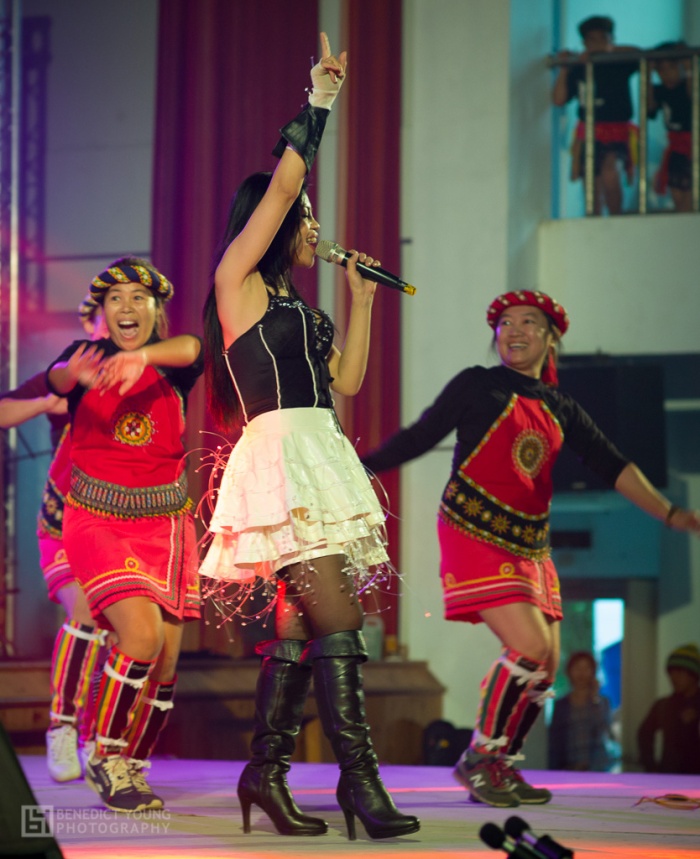
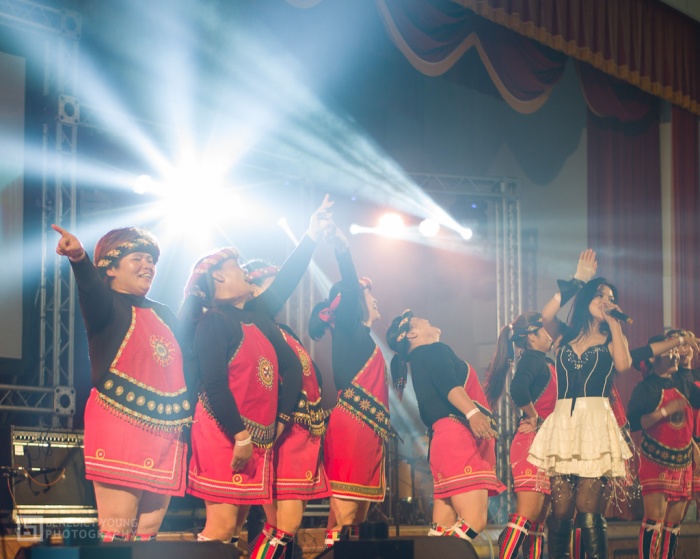






Writings & photos via Benedict Young]]>
I visited Taiwan for the first time 5 years ago with my wife, who’s Taiwanese; at that time, I knew next to nothing about the country’s history and people. This has made observing and photographing life here all the more interesting to me. It is also a clear signifier to me that in the West we seem to lack a concept of what a Taiwanese identity is. This is despite the fact that it is a well functioning democracy in Asia, one of the four Asians tigers and an important economic partner, especially for the US.
Taiwan, I was to discover, has for thousands of years been the home of Austronesian people with genetic and cultural links to the people of Polynesia and Oceania. Over the last four centuries, major outside influences have come from China and Japan, while the first foreign settlers actually came from Europe, with Spain and the Netherlands colonising the island (Spanish rule 1626–1642, Dutch rule 1624-1662). The result is that there is great variety of traditions, beliefs, food, culture and so on in Taiwan. However, it is the culture of Taiwan’s longest-term inhabitants that deserves the most attention; this rich culture is disappearing fast and needs to be shared and preserved. The best route for cultural preservation appears to be via the sublime music and artistic traditions, which have been growing in popularity in Taiwan, especially over the last decade.
There are currently 14 recognised tribal ethnicities in Taiwan (including Atayal, Paiwan, Tsou and more). Those people that have lived in mountainous areas for a long time, a tiny fraction of the population, have remained more culturally and ethical separate, whilst the Austronesian people who lived further down, once referred to as ‘plains dwellers’, have been assimilated. In this way, it can be said that although indigenous people are in a minority, the majority of Taiwan’s people today share some roots with the Austronesian people of Formosa (as Taiwan was known before). Despite this fact, the vast majority of Taiwanese are unaware of this culture beyond the inadequate and often incorrect description from Government sources. More worryingly, many children from aboriginal families just do not see the point in learning their tribal languages any more – Chinese and English are far more useful in getting jobs – and too few are proud of their backgrounds, prefering to hide rather than flaunt their cultural roots.
Undoubtedly, the general lack of awareness of Taiwan’s culture in the West is partly due to the ambiguous political situation. Due to strong pressure from China’s communist party and indecisiveness in Taiwan’s own national policy, the nation exists in a kind of limbo – enjoying good relations to all intents and purposes with the outside world, but not being formally recognised by any of the world’s powerful states. Due to the Communist Party of China’s demands, Taiwan is not allowed to compete under its name in sporting events such as the Olympics, instead needing to compete under the strange moniker ‘Chinese Taipei’ and flying the Olympic flag instead of their national flag. In addition, Taiwan as an address may sometimes appear as ’Taiwan, Province of China’, which is odd since Taiwan has never been part of the Peoples Republic of China. Why does this situation exist? It stems from the fact that Taiwan is also called the Republic Of China (referring to the nationalists who opposed the communists in the Chinese civil war 1927-1950), but according to the CPC’s ‘one China policy’ there can only be one place called China. Incidentally, those in Taiwan who still firmly believe in the idea of the Republic Of China hold that the ROC is actually the only one true China, which exacerbates the situation. Unsurprisingly, being by far the larger of the two, with the most muscle, the PRC gets to call the shots over who’s called what.
In 1949 after many years of the Chinese civil war, the Kuomintang (Chinese Nationalists or Republic of China) lead by Chiang Kai-Shek were being overwhelmed by the communists and fled to Taiwan. They seized control of the island, which had previously been under control of Japan, purportedly planning only to regroup and then retake China, which they believed was rightfully theirs. Of course as history has shown, this never really happened. Instead, Chiang Kai-Shek and the KMT remained in Taiwan, establishing a system of martial law that lasted until 1987. At that time, those who had come over from China and their children after them felt a sense of being both Chinese and Taiwanese. This has now changed, with most people identifying themselves just as Taiwanese, no longer feeling a sense of shared history or closeness to today’s China and not wishing to be associated after being on the receiving end of decades of heavy-handedness and threats from the Chinese government. As for the native aboriginal people, when the KMT came to Taiwan they were obligated to learn Chinese and cease using their native tongue. From then till now, much of their land has been forcibly or underhandedly taken away.
Previously during Japanese colonial era 1895-1945, the indigenous people had been obliged to learn Japanese. Japan (which included Taiwan at that time) had been enemies of the ROC in the 2nd Sino-Japanese war (1937-1945) and also had fought Qing Dynasty China in the 1st Sino-Japanese war (1894-1895). Interestingly, in contrast to the animosity usually felt towards past rulers, there is a quite a nostalgia in Taiwan regarding the period of Japanese rule. Buildings and roads established during the era are regarded as being superior to what came after, Japanese food remains a favourite cuisine of the Taiwanese and Taiwan enjoys good political relations with Japan today. Japanese treatment of the indigenous population is also regarded by some as being comparatively respectful. However in 1930, the aboriginal people did rise up against the Japanese to reclaim their land, only to be brutally suppressed with war planes and bombs.
Before being governed by the Land of the Rising Sun, the Middle Kingdom’s Qing Dynasty had claimed ownership of the island of Formosa (Qing rule, 1683 – 1895). However, at no point were all the peoples of Formosa actually under their jurisdiction. Other than the ethnic Chinese population who lived in Taiwan at that time, the Qing emperor only controlled some of Taiwan’s inhabitants. Those native denizens they had no control over were classed as ‘raw barbarians’. This caused a flashpoint when in 1871 a group of Japanese sailors was attacked and killed in Taiwan by people from the Paiwan tribe. Japan demanded compensation and punishment of the perpetrators from Qing Dynasty China, who claimed ownership of Taiwan, but their request was turned down as the Qing government had to admit they did not rule that population.
However, it was not the first time that Taiwan’s aboriginal population had encountered, or resisted, colonisation; the first colonisers, as previously stated, were Spain and the Netherlands. The latter were the first to romanize a written form of the indigenous aural-tradition languages and attempt to ‘civilise’ the native population. They also brought with them Christianity, which has remained to this day the majority faith among Taiwan’s indigenous people.
The true nature of Taiwan remains something of a mystery to outsiders, and probably to the Taiwanese themselves, but with international relations steadily improving and Taiwan emerging as an alternative holiday destination, this may all be set to change. The next couple of generations may be make or break for the survival of Taiwan’s aboriginal culture, with many of its languages on the verge of extinction, but at the same time there is a rising interest in aboriginal music and way of life. With less and less Taiwanese regarding themselves as ‘Chinese’ with each generation passing and Japanese identity being nearly 70 years out of date, the aeons old aboriginal cultures on Formosa may just hold the key to a sense of modern Taiwanese identity.
[caption id="" align="aligncenter" width="470"] Boy and Dog, Nia’Ucna[/caption]
[caption id="attachment_1396" align="aligncenter" width="470"]
Boy and Dog, Nia’Ucna[/caption]
[caption id="attachment_1396" align="aligncenter" width="470"]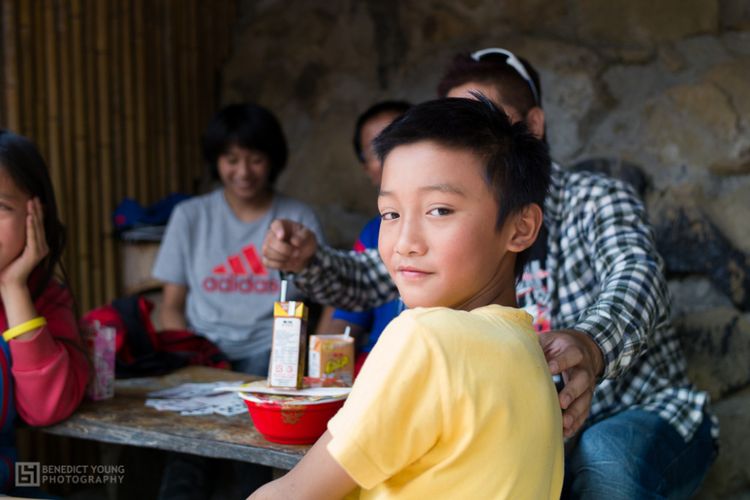 Boy, Nia’Ucna[/caption]
[caption id="" align="aligncenter" width="470"]
Boy, Nia’Ucna[/caption]
[caption id="" align="aligncenter" width="470"] Lady in Nia’Ucna with her Traditional Patterned Weaving[/caption]
[caption id="" align="aligncenter" width="470"]
Lady in Nia’Ucna with her Traditional Patterned Weaving[/caption]
[caption id="" align="aligncenter" width="470"] Aiyu Jelly from Aboriginal Village, Alishan. Taiwan’s Favourite Summer Snack[/caption]
[caption id="" align="aligncenter" width="470"]
Aiyu Jelly from Aboriginal Village, Alishan. Taiwan’s Favourite Summer Snack[/caption]
[caption id="" align="aligncenter" width="470"] Villager, Tsou Tribe, Nia’Ucna Village[/caption]
[caption id="" align="aligncenter" width="470"]
Villager, Tsou Tribe, Nia’Ucna Village[/caption]
[caption id="" align="aligncenter" width="470"] Clergyman, Nia’Ucna Church[/caption]
[caption id="" align="aligncenter" width="470"]
Clergyman, Nia’Ucna Church[/caption]
[caption id="" align="aligncenter" width="470"] Japanese Preacher Visiting Nia’Ucna Church[/caption]
[caption id="" align="aligncenter" width="470"]
Japanese Preacher Visiting Nia’Ucna Church[/caption]
[caption id="" align="aligncenter" width="470"] Famous Amis Tribe Musician, Suming[/caption]
[caption id="" align="aligncenter" width="470"]
Famous Amis Tribe Musician, Suming[/caption]
[caption id="" align="aligncenter" width="470"] Church in Lijia Nia’Ucna, One of Taiwan’s Remotest Villages[/caption]
[caption id="" align="aligncenter" width="470"]
Church in Lijia Nia’Ucna, One of Taiwan’s Remotest Villages[/caption]
[caption id="" align="aligncenter" width="470"] Tsou Villagers Climb High to Pick Aiyu Figs[/caption]
Tsou Villagers Climb High to Pick Aiyu Figs[/caption]
About the Photographer
Benedict Young Benedict Young is a freelance photographer with a passion for global culture and music. Born and raised in Bristol, UK – a city that is a heady mix of laid back West country England and Afro-Carribean and Indian culture – he grew up with creative and supportive parents and surrounded by culture, art and music. Aged 4, his family moved to Nigeria, where he gained his first experience of living abroad. From as young as he can remember, art and music consumed his every thought, which later developed into a passion for photography and music cultures around the world. Benedict visited Taiwan for the first time in 2008 with his wife, where he has found it fascinating discovering the culture of the country, which is virtually unknown in his homeland. Recently, after becoming aware of the rich culture of Taiwan’s indigenous people he has started to focus his energies on making the beauty of Taiwan’s aboriginal culture more known worldwide.Writings & Photo by Benedict Young via Media Diversity @ WritersofColour]]>
他來自鄒族的頭目家族,在部落裡是個名聲響亮的名人,他是巴蘇亞(Pasuya)。 就像鄒族神話裡那位能拔起一座山的偉大勇士巴蘇亞一樣,這位巴蘇亞在年輕時,也曾是位傑出的運動員。Pasuya is the brother of the former chief and is an important dignitary in Tsou society. Like his mythical namesake in Tsou legend (Pasuya, a mighty warrior, who was strong enough pull down mountains), this Pasuya was an accomplished athlete in his youth.
